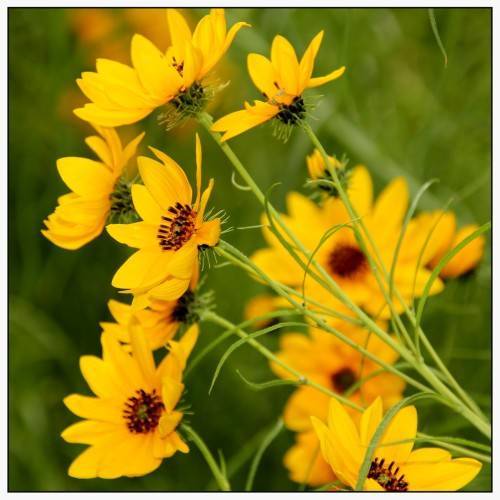
willow-leaved sunflower
Helianthus salicifolius
Cycle:
Herbaceous Perennial
Watering:
Average
Hardiness Zone:
4 - 9
Flowers:
Flowers
Sun:
Full sun
Fruits:
Fruits Ready In Fall
Leaf:
Yes
Growth Rate:
Low
Maintenance:
Moderate
Drought Tolerant:
Yes
Salt Tolerant:
Yes
Care Level:
Medium
watering
The willow-leaved sunflower requires regular watering to thrive. In the warmer months during the active growing period from late spring to mid-fall, the soil should be kept moist but not soggy. Water the soil thoroughly when the top inch or 2 feels dry. Water an established willow-leaved sunflower every 7 to 10 days in the heat of the summer and every 14 to 21 days in the fall. During the winter, water your willow-leaved sunflower only when the top inch or 2 of soil feels dry. Reduce the frequency of watering in the winter to once every few weeks.
sunlight
The willow-leaved sunflower (Helianthus salicifolius) prefers full sun exposure for maximum growth, meaning at least 6 to 8 hours of direct sun per day. If grown in partial shade, however, it will still bloom, but with fewer flowers. Early morning sun is the most beneficial, as it helps to dry off the dew and reduce any fungal disease issues. If the plant is in a pot, it may need to be moved or rotated during the day to ensure it does not become too scorched in the direct sunlight.
pruning
The best time to prune a Willow-leaved Sunflower (Helianthus salicifolius) is in the spring, right after its buds open and begin to bloom. Pruning in the fall or winter can damage the plant, so it should be avoided. When it comes to how much you prune these plants, the rule of thumb is to remove no more than 1-third of the total stem length. However, if the shrub is looking crowded or unruly, you may be able to remove up to 1-half of the plant. Avoid cutting all the way down to the base of the shrub, however, as this will not promote healthy future growth. Finally, remove any dead or diseased stems and leaves to help the plant stay healthy and vigorous. This should be done year-round, and no more than a quarter of the total stem should be removed in any given pruning session.
